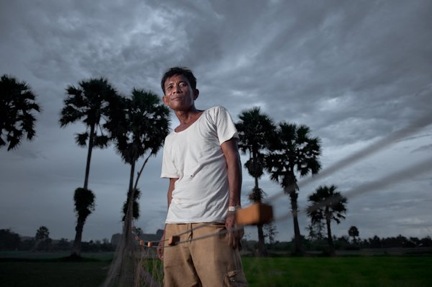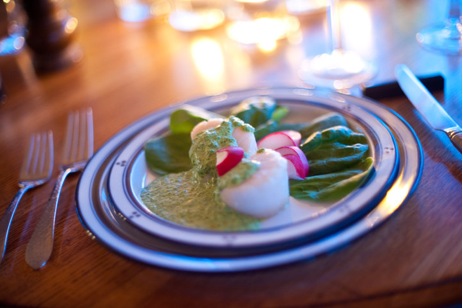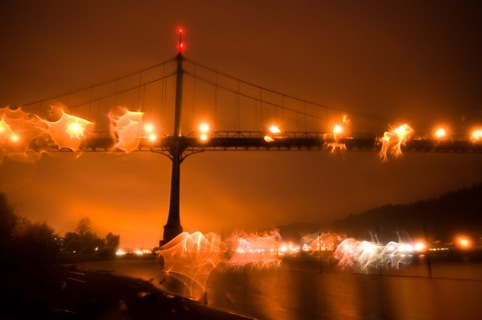Professionally it’s my job to ensure that I can deliver an image on time and meet informational needs in a visually stimulating way. Personally though, I understand a lot of that is a result of the creative process that requires a certain amount of planning, skills, tools, and experience. It can also take intuition, and ‘letting go of control’ of rigid plans, schedules, and expectations. The greatest lesson I had learned from a lot of my photographic mentors when asked, ‘how did you get such a great shot?!’. The answer was nearly always “I simply showed up, and I had my camera”. I am over simplifying things, but a great deal does seem to lay credence to this concept as a core foundation to nearly every great image made, even when you don’t think one exists. The following are a few tips and points to keep in mind to look for and find those great images while on your travels whether across the globe, or in your back yard.
I had a rough shooting day in Cambodia last year while working on a project interviewing and photographing some of the Khmer Rouge survivors that I knew of in an outer lying province. Utterly exhausted and feeling like a failure, I and the team climbed into our taxi for the long, three hour dusty, bumpy taxi ride back home. The driver had asked why we were traveling to such a remote area of Cambodia. We explained the project to him, and shared how I had a pretty bad day with no great images because of either bad light, or unwilling subjects, or just bad timing. He was very kind, and listened like all great taxi cab drivers should. To our surprise, he himself was a Khmer Rouge survivor! He spoke with us for most of the drive about his own personally experiences as a former reluctant soldier for the Khmer Rouge. We all talked and asked questions and learned far more than we had ever thought. Of course, this all re-electrified us, and I just couldn’t help but ask if we could make a portrait of him. Thankfully, he agreed, and pulled over in the middle of the under construction dirt highway. We ran off into a rice field next to the road, the sun having already set, and what looked like a rainstorm about to dump. We quickly set up our speed light flash, and made a portrait in about 5 minutes. Lesson learned: despite one failure, always show up, and listen to what actually is available…and have your camera. Sometimes the best subject to photograph is the one that is provided in front of you, and also interested and engaged with you.
I tend to cook a lot, and attend a lot of dinner parties with friends. It’s a great time to socialize, catch up, and learn new recipes, but also make some great photos. Even though I never really seem to turn off the ‘photography filter’, there are times that I will try to step away from it for just a little while. However, when I do, that always seems to be the one time that I think I could have made a really great image, especially when it comes to dinner parties. Last year I attended a small late afternoon gathering at a new acquaintances home only providing wine and the protein; scallops, with the idea of dining while watching the New Mexico sunset. Of course, we pretty much went through the bottle wine while catching up and sharing stories, and the meal took much longer to cook than expected. I grabbed the sunset, but what of the meal?! Since we took so long, she improvised the dish with radishes and a great pesto sauce, sautéing the scallops in the last half glass of wine. I also had to improvise making the photo of the food, but the outcome was much better than we could have expected. The blue cast is from the twilight from the windows filtering in from outside, and the warm tones are from a bunch of tea light candles that she had in the kitchen. It perfectly reflects the cool colors of the plate edge and spinach, and the red and blonde tones of the scallops and radishes. Had we crammed and tried to shoot at sunset, it would have yielded great contrast and much harsher colors. These worked much easier, and more appetizing. Lesson learned: patience, don’t force things, especially great food, and great images. Sometimes the best light is when you barely notice it. The scallops were incredible!
I am learning that living in the Northwest seems to involve accepting a lot of rain, and gray. I love being outdoors, hiking, exploring, off-roading, and trail running. I also love structures and how they relate to their natural environment. I had been exploring the many bridges and water-ways of the Portland Oregon area last winter, with some pretty bad luck from the rainy weather. I had a rain cover for the camera, but the lens kept getting covered in water drops and mist. It was a constant issue trying to keep that blasted lens clear and streak free. Every long exposure yielded spots and blotches that just ruined each and every frame. I try to never really just ‘give up’, as I know that there is an image to be made nearly any where at any time. But where was this one going to be? I decided to stop fighting the rain, and see what it could actually provide. It was definitely very prevalent, so I was curious to see if it might even help me find and make my image. Sure enough, after a 30 second exposure, and just the right amount of rain coating the lens, it actually helped to make a much cooler image than I would have ever thought by causing flares and light blooms where the drops had landed where there were bridge lights. Staying with the daylight white balance also helped to by using the warm tones of the incandescent lights and cityscape to back light the bridge. Lesson learned: even great images can be made in bad weather. Just have patience, a sense of wonder, and some whiskey to stay warm. Look at using the things that may be giving you the most grief to help make a more unique image.
Even though structure and planning are very important to have direction and form to function and achieve goals in your photographic endeavors, look at being a bit more fluid and flexible. Look around you, learn to find what is at your disposal, and learn to look at your travel photography as a scavenger hunt. The first key; show up. The second key; simply have your camera. You can’t make great images, if you don’t have it with you! You maybe more pleasantly surprised with the results once you let things go, and be a bit more organic with the process, than with the images that you may rigidly attempt to create, and also the experience that you have while making them.
Happy hunting!
-Alan Thornton / Instructor @ BPSOP
Alan Teaches:













